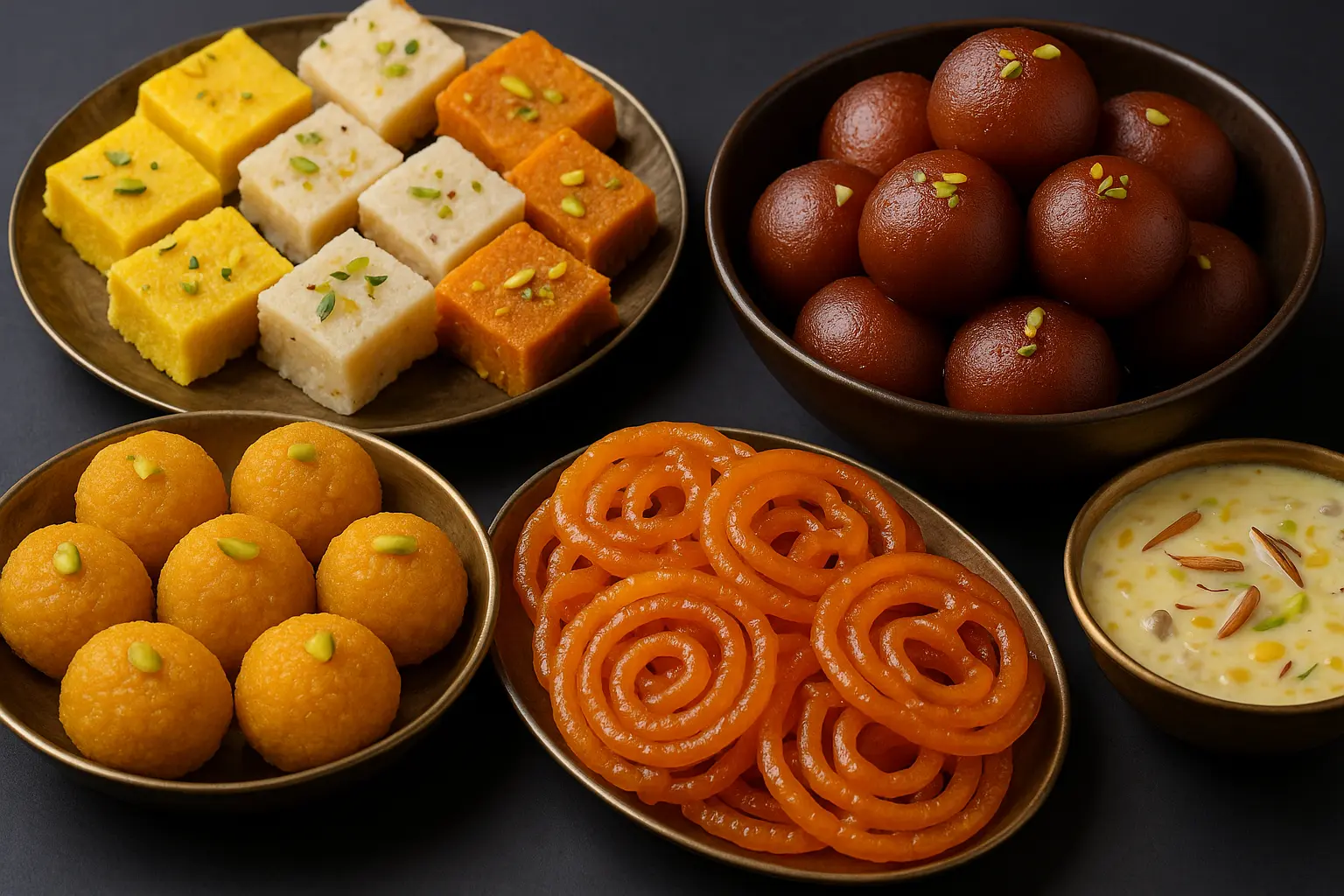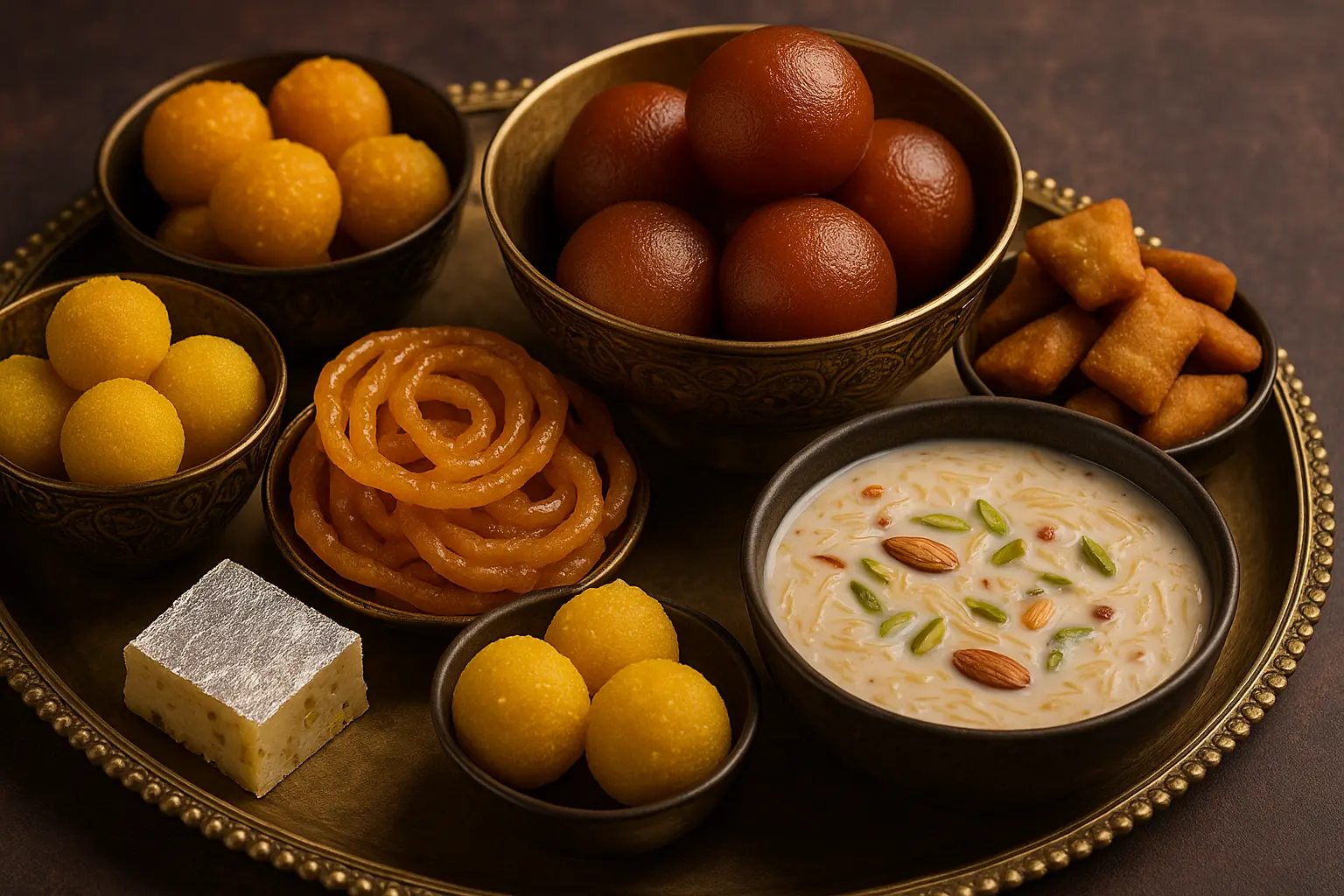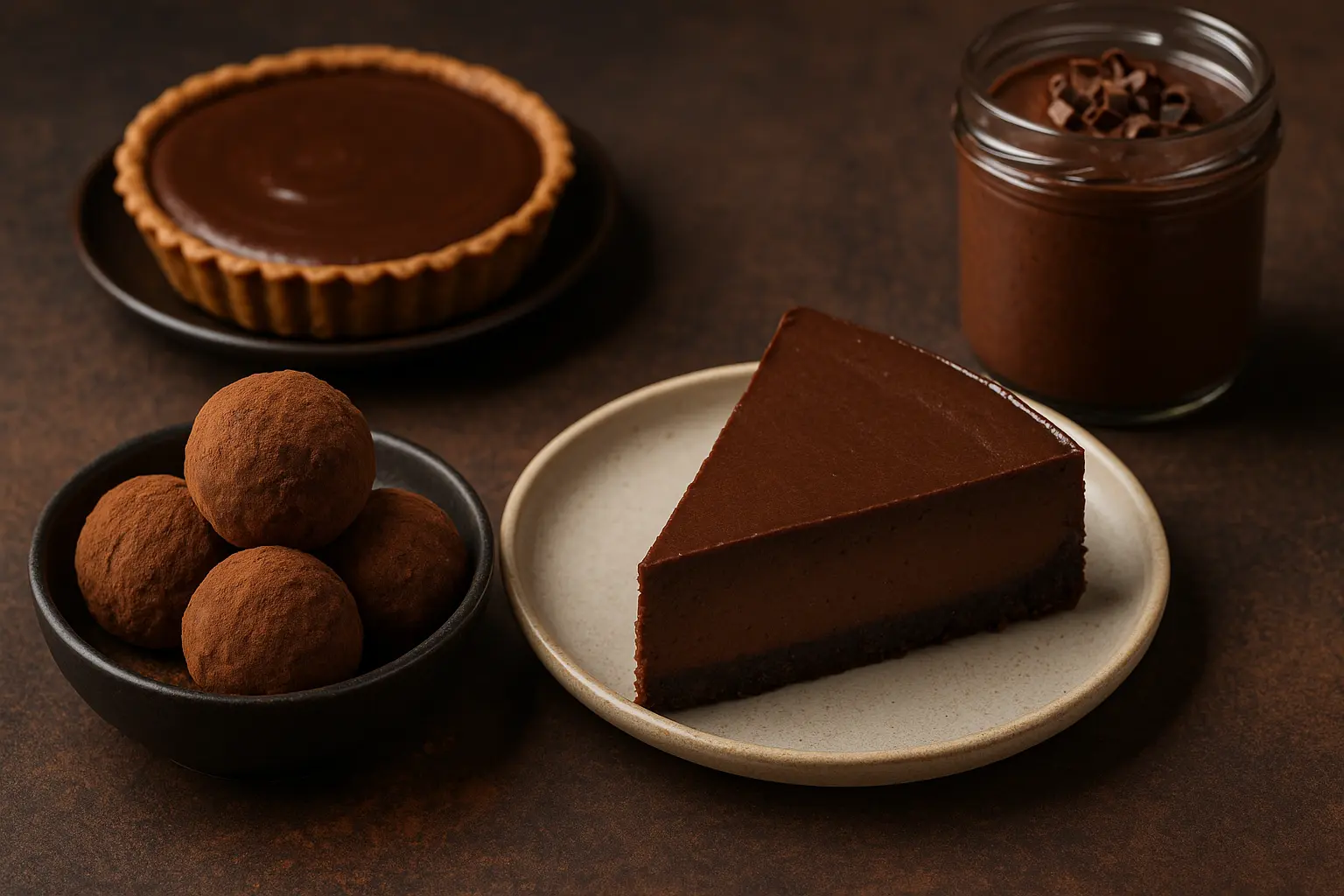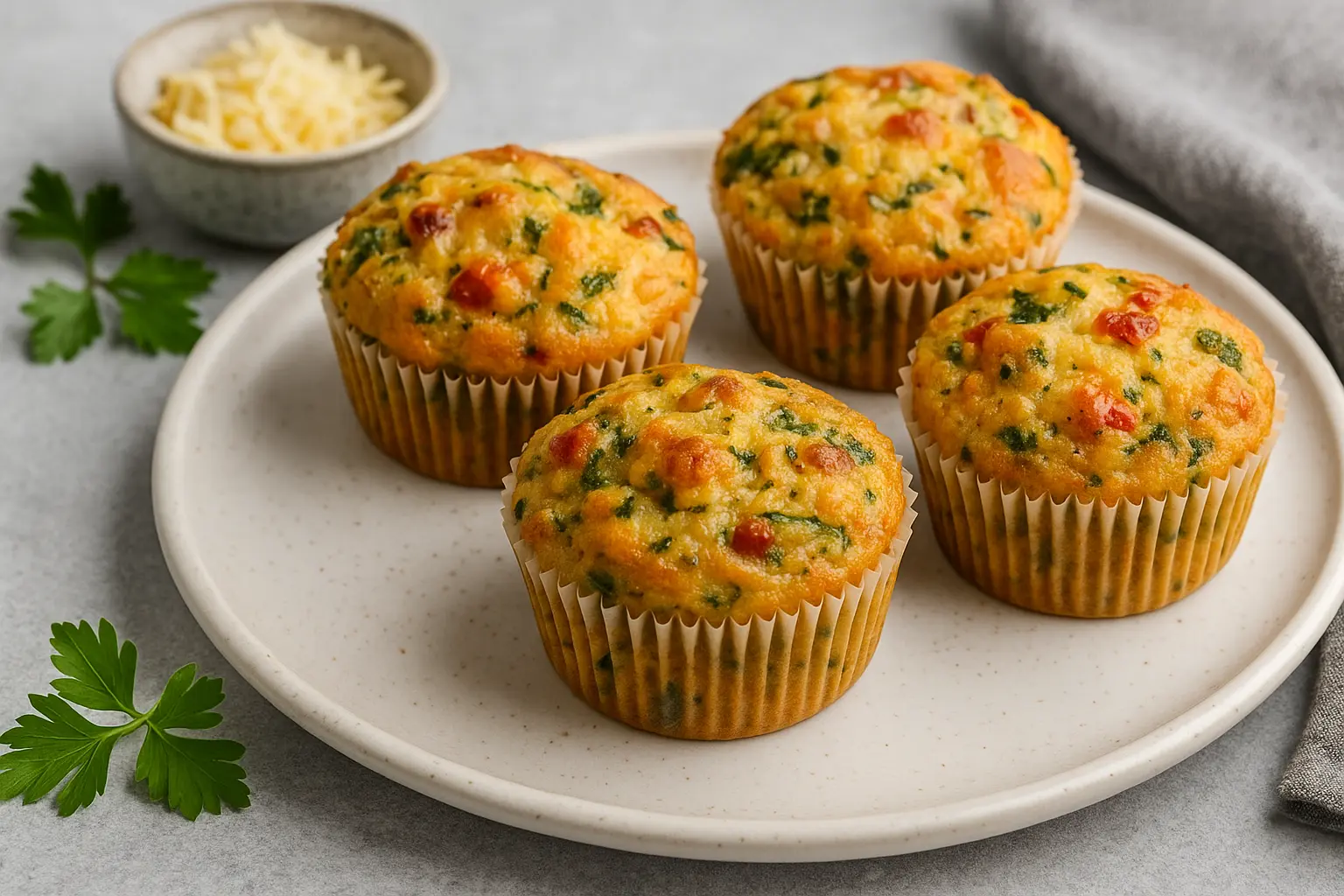Festivals in India are incomplete without a spread of sweets. From the glittering diyas of Diwali to the colorful celebrations of Holi, from Raksha Bandhan’s sibling bond to Ganesh Chaturthi’s devotion, every occasion has its own set of beloved desserts. These sweets aren’t just food; they’re symbols of joy, togetherness, and tradition.
In this blog, we’ll explore the history, cultural significance, popular recipes, and modern twists of festive Indian sweets. Whether you’re looking to recreate the classics or try new variations, this guide will walk you through everything you need to know about the sweets that define Indian celebrations.

1. The Cultural Importance of Indian Sweets
A Tradition Rooted in Rituals
Sweets (or mithai) are an integral part of Indian traditions. Every religious ceremony, wedding, or family milestone is marked by sharing sweets. In Hindu culture, offering sweets to deities signifies devotion, and distributing them afterward (prasadam) symbolizes sharing divine blessings.
Sweet Bonds of Community
Festivals are not just about family but also about neighbors and communities. During Diwali, boxes of barfi or soan papdi are exchanged. On Eid, sheer khurma is shared with friends across faiths. Sweets bring people closer, serving as edible gestures of love and respect.
Symbolism in Flavors
Different sweets often represent specific values. For instance:
- Gulab Jamun → Warmth and indulgence.
- Laddoos → Prosperity and abundance.
- Kheer → Simplicity and purity.
2. Classic Festive Sweets
2.1 Gulab Jamun – The Eternal Favorite
Soft fried dumplings soaked in rose-scented sugar syrup, gulab jamun is one of the most iconic sweets. It’s believed to have Persian origins but has been wholeheartedly adopted by Indian cuisine.
- Occasions: Diwali, weddings, Eid.
- Variations: Kala jamun (darker version), stuffed gulab jamun with nuts or khoya.
2.2 Laddoos – Every Festival’s Essential
From besan laddoo to motichoor laddoo, these round balls of joy are made in countless variations. They’re also offered to deities—Lord Ganesha is especially associated with modaks (a type of laddoo).
- Occasions: Ganesh Chaturthi, Diwali, Janmashtami.
- Modern twist: Oats and jaggery laddoo for a healthier spin.
2.3 Barfi – A Sweet Canvas
Barfi is essentially a fudge made with milk solids, sugar, and flavorings. Its versatility allows for flavors like coconut, pistachio, almond, and even chocolate.
- Occasions: Raksha Bandhan, Diwali.
- Eye-catching touch: Silver leaf (varak) for a festive shine.
2.4 Jalebi – Spirals of Joy
Golden, crispy spirals dipped in saffron sugar syrup, jalebi is synonymous with celebration. Best enjoyed warm, often paired with milk or rabri.
- Occasions: Independence Day breakfasts, weddings, Holi.
2.5 Kheer and Payasam – The Creamy Classics
Made with rice, vermicelli, or lentils simmered in milk and flavored with cardamom, kheer is offered in temples and made at home during special occasions.
- Occasions: Janmashtami, Pongal, Onam.
- Regional twist: South Indian payasam with jaggery and coconut milk.
3. Regional Highlights of Festive Sweets
India’s diversity reflects beautifully in its sweets:
- North India: Rasgulla, rasmalai, peda, and gajar ka halwa.
- South India: Mysore pak, adhirasam, coconut barfi.
- East India: Sandesh, chhena poda, malpua.
- West India: Modak, shrikhand, basundi.
Each region has its specialties tied to local produce and traditions.
4. How Festivals Shape Sweet Traditions
Diwali
Known as the festival of lights, it is also a festival of sweets. Laddoos, barfi, and gulab jamuns dominate. Families often make namkeens (savories) alongside to balance the sweetness.
Holi
Celebrated with colors and gujiyas, a sweet stuffed with khoya and dried fruits. Thandai, a spiced milk drink, complements the sweets.
Eid
The centerpiece is sheer khurma—a vermicelli pudding with milk, dates, and nuts. Sharing it with neighbors is customary.
Ganesh Chaturthi
Modak, a dumpling filled with jaggery and coconut, is considered Lord Ganesha’s favorite.
Pongal/Onam
South Indian festivals feature payasam and jaggery-based sweets that highlight local flavors like coconut and cardamom.
5. Modern Twists on Traditional Sweets
Contemporary chefs and home cooks are experimenting with fusion sweets:
- Chocolate burfi for kids.
- Vegan gulab jamun made with almond milk.
- Gluten-free laddoos using millet flours.
- Cheesecake with rasmalai base for Indo-Western flair.
These innovations keep traditional sweets relevant for younger generations while making them inclusive of dietary needs.
6. Tips for Making Festive Sweets at Home
- Use fresh ingredients: Especially milk, ghee, and nuts.
- Perfect your sugar syrup: One- or two-string consistency is key for gulab jamun, jalebi, and barfi.
- Experiment with natural flavors: Cardamom, saffron, rose water, and kewra elevate any mithai.
- Make ahead for convenience: Many sweets like laddoos and barfis can be prepared days in advance.
- Balance tradition with health: Swap refined sugar with jaggery or honey where possible.
7. Storing and Gifting Festive Sweets
- Storage: Barfis and laddoos last longer when refrigerated; syrupy sweets should be consumed quickly.
- Packaging: Decorative boxes, eco-friendly tins, or mason jars make gifting more personal.
- Personal touch: Add handwritten notes or pair sweets with savories for a balanced hamper.
8. Why Indian Sweets Will Always Steal the Show
No matter how globalized food trends become, Indian sweets remain timeless. They’re more than recipes—they’re heirlooms, passed down through generations. Each bite carries memories of family gatherings, cultural pride, and festive spirit.
In an age where convenience foods dominate, making and sharing Indian sweets reminds us of the joy of slowing down, cooking with love, and celebrating together.
Conclusion
Festive Indian sweets are not just indulgences—they’re part of India’s cultural DNA. From gulab jamun dripping with syrup to laddoos infused with nostalgia, every mithai tells a story. Whether you stick to traditional recipes or embrace modern fusions, these sweets will always brighten celebrations and create lasting memories.
So the next time a festival rolls around, roll up your sleeves, pick your favorite mithai, and let the magic of Indian sweets steal the show.
Leave a comment
Your email address will not be published. Required fields are marked *




















